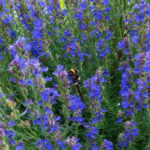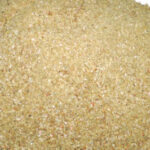Packed with nutrition, lima beans are a beloved legume from Mesoamerica that is full of dietary fiber. They sometimes taste like butter when they’re cooked. And knowing how to grow lima beans is a great skill for gardeners who want to improve their health and soil microbiology.
The lima bean plant originated in Lima, Peru, where they’ve been cultivated for over 4000 years. The Inca people there learned how to cook the lima bean properly to remove toxicity, and European settlers took the beans back to their homelands where they grew in popularity.
There are many lima bean cultivars that come in three size variations: large, small, and baby limas. Gardeners with varying space parameters can grow lima beans. With different growing habits – either bushy or climbing – growers can choose plants that help them save even more space if necessary.
Quick Care Guide
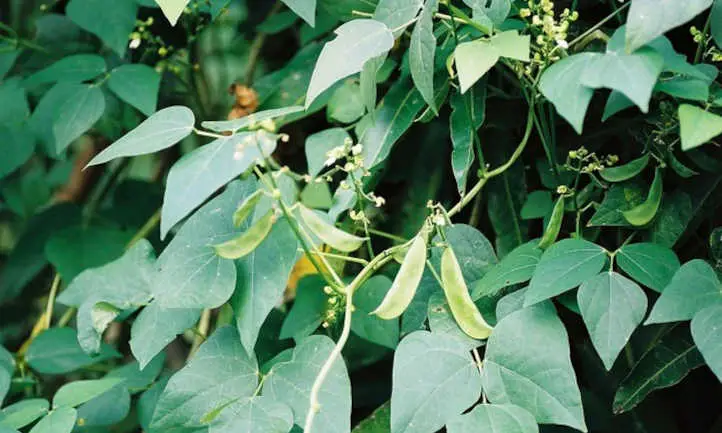
| Common Name(s) | Butter bean, sieva, double beans, Madagascar beans, chad beans, wax beans, Burma beans |
| Scientific Name | Phaseolus lunatus |
| Days to Harvest | 65 to 90 days |
| Light | Full sun |
| Water | 1 inch per week |
| Soil | Rich, loose, well-draining |
| Fertilizer | Aged manure or compost |
| Pests | Mexican bean beetles, bean leaf beetles, corn earworms |
| Diseases | Root rot, mosaic virus, powdery mildew |
All About Lima Beans

Lima beans (Phaseolus lunatus) are also known as butter beans, sieva beans, double beans, Madagascar beans, chad beans, and wax beans. They originated in Peru and Central America, where they’ve been cultivated for at least 4000 years. They made their way to North America via migrations and colonization of what was then deemed the “New World”. Today, lima beans are popular everywhere. They are an important staple in Mexico, where wild cultivars grow.
There are two types of lima bean plants: bush lima beans and pole lima beans. Both range from 3 to 15 feet in height. Each leaf is comprised of three leaflets. The half flowers are small, white or violet, and self-pollinate. In summer, flowers bloom and die away. In their place long 3 to 8 inch pods form that contain 2 to 4 lima bean seeds.
Bush lima beans have smaller seeds and take less time to form, whereas larger pole bean varieties need longer. Fruition times range from 60 to 100 days. They’re ready to harvest in the fall. Seeds are most commonly white, but there are plenty of variations of white with brown, purple, green, and blue. Lima beans grow shallow roots that branch out around the plant and affix nitrogen into the soil.
Raw lima beans contain toxins and must be boiled for at least 10 minutes before consumption. Due to their buttery flavor, they have been called butter beans, especially when they’re freshly harvested and shelled. All parts of the plant the ground up are edible – bean sprouts, leaves, young pods, and green seeds. However, the most common reason for growing lima beans is for seeds. Seed sizes have a wide range too.
Types of Lima Beans
The Henderson lima bean is an heirloom bush bean that loves hot weather and grows compactly. Henderson’s traditional white seeds mature quickly, within 60 to 70 days. Each pod produces 3 or more seeds. Often Henderson is used in succession planting because it grows quickly and finishes its life cycle during temperature seasons.
Scarlet runner beans grow best in zones 7 through 11. These plants are pole lima beans that grow bright purple or deep red beans inside light green pods. They’re also fast-growing and produce mature seeds within 70 days. The flowers of these lima bean plants are a striking scarlet just like the seeds, too.
Fordhook 242 lima bean plants, also known as potato limas are the bean grown for commercial use. The large beans have a hazelnut-like flavor and mature within 75 days. They are bush beans that grow to 18 inches tall. They’re heat-tolerant, drought-tolerant, and prolific. These grow well in both cooler and hotter regions.
Planting Lima Beans
Plant lima beans in spring 3 to 4 weeks after the last frost has passed. Alternately, start lima beans indoors 2 to 3 weeks before the last frost has passed in peat pots, starter cells, or soil blocks. Choose a site with loose, rich soil, and full sun. Containers are a suitable place to plant lima beans, as long as they are 1 foot wide and 1 foot deep. Bush lima bean varieties don’t need support, but pole lima bean varieties need a stake or trellis to climb. Ensure the soil has been well-worked before planting either beans or transplants. Avoid planting beans where other legumes like fava beans or green beans have just grown as it will overwhelm the plant with nitrogen and reduce yields.
To plant seeds, space pole varieties 6 to 10 inches apart in rows 30 to 36 inches apart. Plant bush beans 3 to 6 inches apart in rows 24 to 30 inches apart. Set your trellis, poles, and stakes in place at planting time to avoid disturbing developing plant roots. Plant one seed per hole, and in 1 to 3 weeks they’ll germinate. Place transplants in the garden in the same manner, with any necessary stakes or trellises included.
Care
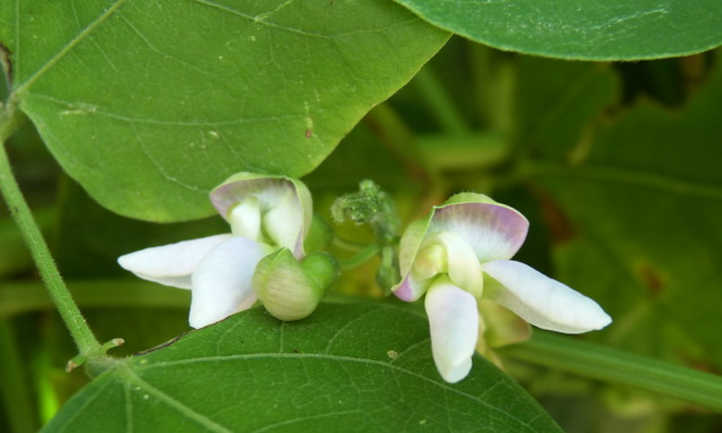
Lima beans generally don’t need a ton of upkeep, especially if the basic care requirements are already met. So, let’s discuss those!
Sun and Temperature
Lima beans grow best in full sun. Partial shade is adequate but reduces yields. They need at least 6-8 hours of direct sun. They grow in USDA zones 2 through 11, making it possible to cultivate them almost anywhere. In areas with a short growing season, pole beans don’t have enough time to form green pods. The ideal temperature range for most lima bean plants is between 60 and 70 degrees Fahrenheit. Some varieties are highly heat-tolerant, while others are adaptable to both heat and cold. Most varieties handle heat up to 110 degrees. They won’t set bean pods in temperatures under 80 degrees, though. Protect them well in a snap freeze with a good quality frost cloth.
Water and Humidity
Keep the soil evenly moist in the lima bean patch. Well-draining soil is a must. Allow the soil moisture to evaporate between watering. Ensure the soil isn’t waterlogged when you plant beans. They’ll crack under too much soil moisture. When the lima bean pods are forming, water at least a few times per week to keep the soil moist. Use drip irrigation or soaker hoses that concentrate the water at the base of the plant, rather than the leaves which are prone to mildew. Don’t water when it is rainy as limas are drought tolerant.
Soil
Give your beans loose, rich, well-draining soil. Combine vermiculite, sand, and well-rotted manure or compost. Ensure compaction isn’t an issue upon planting, as this severely stunts growth. Work the top 2 to 3 inches of soil with a fork or spade so that it’s loose before planting. This gives the plant roots room to spread out and form more lima beans.
Fertilizing
Limas do not require fertilizers. They’ll have trouble growing beans on plants that have been treated with high nitrogen fertilizers. Since they already affix nitrogen into the soil, there’s no need to add any. Too much fertilizer burns the plant. Provide well-rotted compost or aged manure at planting time to ensure there’s enough potassium and phosphorous, but they’ll handle the rest.
Pruning
While the plants are growing, remove mildewed or diseased foliage as it appears. Limas don’t need pruning, but at the end of the season, pinch back the top of the plant to ensure all the plant’s energy is diverted into ripening the remaining young beans. Because lima beans are perennial, cut them back before the winter sets in. Then, cover the planting area with plenty of mulch to keep the soil warm.
Propagation
The only method of propagating pole varieties and bush varieties is by seed. Check out the planting section of this piece for guidelines.
Harvesting and Storing
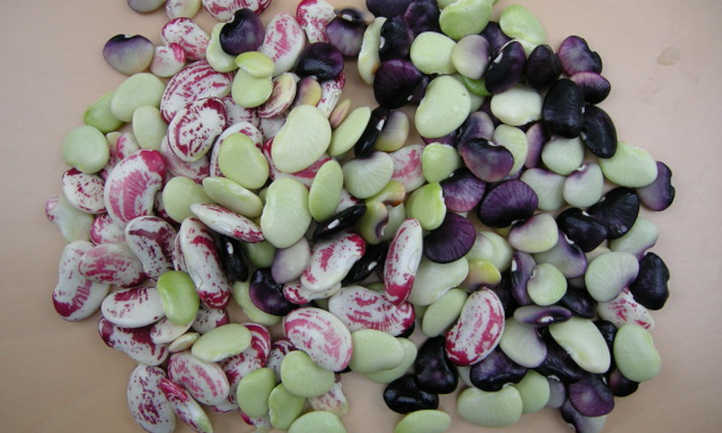
Once you’ve done all the hard work to grow lima beans, it’s time to enjoy the fruits of your labor. Let’s talk about when it’s time to harvest lima beans, and what to do with them afterward.
Harvesting
Depending on the variety, your vegetable garden will have delicious fresh bright green lima beans ready in 60 to 110 days. Wait until the plant starts to produce pods that are big and plump, then harvest lima beans. Pod development will affect beans, so test a pod before you remove others. Open it and look at the beans within. They are ready when the rest of the plant has dried and turned brown. Alternately, harvest dried lima beans when the pods turn brown and become brittle. Harvest dried beans or those for fresh eating.
To dry beans after you’ve harvested them, put them in a dehydrator or dry them in a well-ventilated, cool area until they are hard to the touch. Sterilize beans from pole varieties that could contain insects and their eggs. Seal them in a plastic bag and place them in the freezer at 0 degrees for 48 hours. Alternately, place the dry beans in an even layer on a cookie sheet in the oven at 160 degrees for 30 minutes.
Storing
Store fresh beans in their pods in the refrigerator in an airtight container or plastic bag for 2 days. Clean them thoroughly before use.
Freeze them, can them, or store them dry. Canned beans in both fresh or dried forms keep for 1 year. Frozen lima beans last for 9 months in an airtight container or plastic bag. Dry lima beans keep in an airtight container at room temperature for 6 months.
Remember! It’s very important to cook them for at least 10 minutes before eating them. Raw beans are toxic.
Troubleshooting

While limas are hardy and adapted to many conditions, there are a few issues that could crop up. There are some pests and diseases to watch out for as well.
Growing Problems
Most people don’t have issues with lima beans outside of planting them in improper garden soil. Give them well-draining and well-worked, loose soil to grow in. If you planted in compacted soil, work in a little bit of vermiculite and agricultural sand around the base of the plant.
Do not overwater lima beans, as this promotes irregular pod growth. Instead, allow the top two inches of soil to dry out a little between watering.
If you didn’t provide a trellis for pole beans at planting, slowly train the plant onto a stake or trellis after the fact.
Starting to see pods drop off the plant? This may be due to planting inside the last frost date range. Provide ample protection for your beans and ensure they’re kept out of the cold.
Pests
Bean beetles are small, round beetles that resemble ladybugs, but they’re light orange instead of red. They have a wider head, with small antennae. They turn the leaves of your bean plants into lace or they chomp bean pods. Pick them off by hand and place them in soapy water. Chickens will handpick them for you. Row covers protect your plants, especially in the early stages. Neem oil sprayed outside of the flowering and fruiting phases in temperatures under 85 degrees deters beetles.
Bean leaf beetles look a lot like the last beetle we discussed, but they’re longer with black lines on either side of their thorax. They also feed on leaves and chew holes through limas. Their larva feed on the roots of bean plants too. Use row covers and hand-picking in conjunction with neem oil, as described in the last paragraph. Pyrethrin sprays applied 7 to 10 days apart also keep them at bay.
Corn earworms are the caterpillar form of the Helicoverpa zea moth species. They too feed on bean leaves, vines, stems – you name it! They’re hungry. Moths lay eggs on bean plants and worms hatch to eat until they can pupate. Handpick them as you see them or set your chickens on the plants. BT sprays (Bacillus thuringiensis) kill them as they feed on your plants before they get to the pupation stage.
Diseases
Root-area rots and some forms of mildew are fungal diseases that arise in unusually warm and wet weather, or with improper watering.
Once root rot sets in, there is nothing to do but remove the plant and dispose of it in the trash. Opt to plant resistant varieties, and make sure your soil is well-draining to reduce the formation of the fungus that causes this type of rot.
Powdery mildew comes from fungal spores that infect wet leaves. It’s also contracted from nearby infected plants if they’re infected and spreading spores. Remove damaged foliage as it appears and remove infected plant debris. Prevent mildew with neem oil or copper fungicide sprays applied after removing infected material and intermittently through warm, humid seasons. If your bean plant is fully infected, remove it entirely and dispose of it. Do not compost this material, as it may contain spores that will spread the mildew further.
Bean mosaic virus shows when leaves become mottled with a light yellow color. As foliage warps, dark green leaf veins appear. Generally, the disease is spread by aphids who feed on infected plant material and make their way to a healthy plant. Control them with neem oil, and remove them by hand as much as possible. Because there is no treatment or cure, completely remove infected plants and dispose of them in the trash to reduce the risk of further spread.
Frequently Asked Questions

Q: Are lima beans easy to grow?
A: They are! And they’re adapted to many climates.
Q: Do lima beans climb?
A: Pole beans do, but bush beans grow in a bushy formation.
Q: How many lima beans will one plant produce?
A: Some beans produce 10 to 20 pounds per plant.




